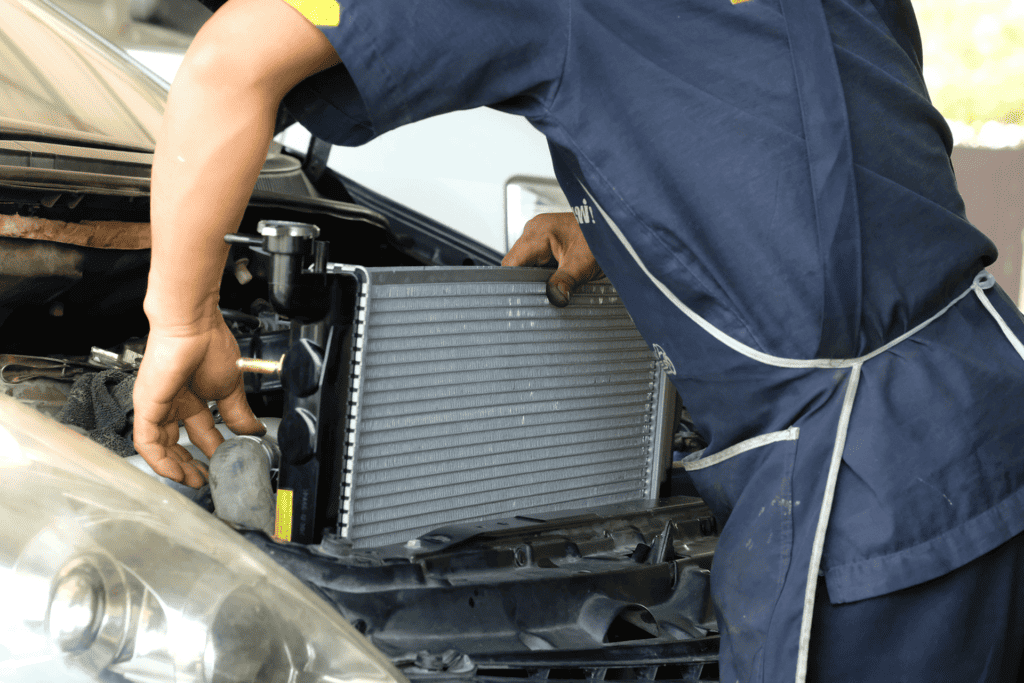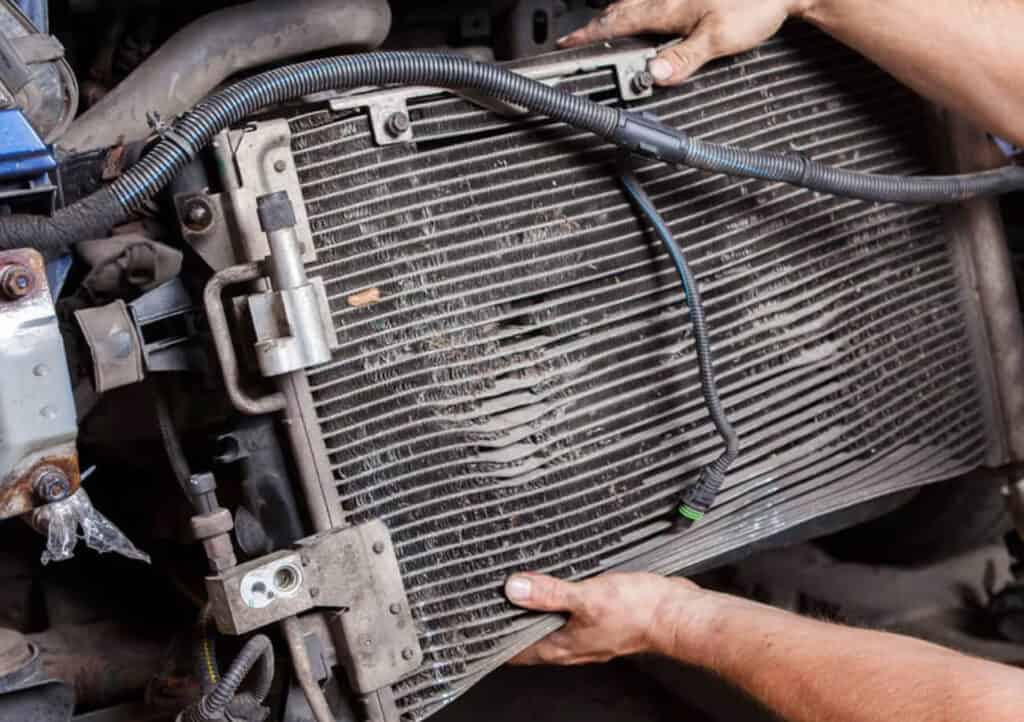Introduction: 8 Signs Your Radiator Needs to be Replaced
Your radiator is like the goalkeeper in a soccer match—often overlooked but crucial in keeping the whole operation running smoothly. It’s high time we gave this component the attention it deserves. So here are eight definitive signs that your radiator might be screaming for a replacement.
The Unsung Hero of Your Engine Bay—Why Radiators Matter
Let’s start by giving the radiator the attention it deserves. Nestled among a constellation of engine parts, the radiator is like the goalkeeper in a soccer match—unobtrusive but vital. It’s the unsung hero that keeps your engine from turning into a miniature version of Mount Vesuvius. Radiators function to dissipate heat generated by the engine, thereby maintaining a balanced temperature that keeps your vehicle running smoothly. Ignore the radiator, and you’re practically rolling out the red carpet for a plethora of problems, including the dreaded engine meltdown.
But why does the radiator matter so much? It’s simple, really. Your car’s engine is like an athlete—put it under stress, and it’s going to break a sweat (in the form of heat). If that heat isn’t effectively managed, the engine’s performance drops, and the risk of damage climbs. Failing to address issues with your radiator can lead to a chain reaction of costly repairs, from gasket failures to warped engine components and beyond. Therefore, spotting the warning signs of a failing radiator can save you not just money, but also the inconvenience of untimely breakdowns.

Temperature’s Rising: The Overheating Warning
Think of your engine’s temperature gauge as the thermometer of a feverish child. When that needle creeps into the red zone, it’s equivalent to a 103-degree fever. Overheating is like your car’s way of screaming, “I need help, NOW!” It’s the most straightforward and alarming sign that your radiator isn’t doing its job. This could be because of various reasons such as blocked passageways that prevent the coolant from circulating properly, or a malfunctioning cooling fan that doesn’t kick in when it should.
However, it’s crucial to understand that overheating isn’t just a symptom; it’s an urgent problem. If not addressed immediately, overheating can cause significant engine damage, including but not limited to, blown head gaskets, cracked engine blocks, and warped cylinders. All of these issues can quickly turn into financial sinkholes. The moment you notice overheating, pull over to a safe location, turn off your engine, and seek professional help. Trust me, treating this as a medical emergency for your vehicle could save you from a world of headaches—both mechanical and financial.
Coolant Conundrum: Leaks, Levels, and Discoloration
When it comes to radiator health, the coolant plays a starring role. Think of it as the lifeblood of your cooling system. A quick glance at your coolant reservoir can tell you a lot. You’re ideally looking for a bright, vibrant color—usually a neon green or sometimes yellow. This is a good indicator that all’s well in Radiatorville. But if you notice the coolant turning murky, muddy, or even rust-colored, consider it a red flag waving at you. Murky coolant can indicate internal corrosion or even the mixing of antifreeze and engine oil, which can spell big trouble for your engine.
Let’s not forget leaks and inconsistent levels either. If you notice that your coolant levels are dropping faster than a rock star’s reputation, or you spot a puddle under your car, it’s time to investigate. Leaks can come from the radiator itself or from the numerous hoses and fixtures that make up the cooling system. Inconsistent levels can indicate that coolant is escaping or that there’s a blockage in the system. Either way, it’s a situation requiring immediate attention before minor issues turn into major repairs.
Foul Play: Unusual Smells and What They Mean
The scent of freshly baked cookies is wonderful. A sweet or metallic smell emanating from your car, however, is not. When your car starts to emit an unusual odor, it’s often the first sign that something’s amiss. That sweet smell is usually antifreeze, which can be leaking externally or even internally, leading to potential overheating and engine damage. It’s like the car’s way of saying, “Hey, look at me; something’s not right.”
But what about metallic smells? This is your vehicle’s way of indicating that internal components, possibly within the radiator or the engine, are heating up to the point of producing a smell. Metallic odors can suggest that the radiator is corroding internally, contaminating your coolant, and causing overheating issues. If your nose is giving you clues that something is off, it’s worth taking the time to inspect the radiator and cooling system before you’re left with a car that’s too hot to handle.
Dashboard Drama: Warning Lights and Error Codes
In this digital age, our cars are smarter than ever. They come with a host of sensors designed to alert us when something goes wrong. You might notice warning lights flickering on your dashboard, especially those related to temperature or the cooling system. It’s like your car’s urgent telegram saying, “Check me out, ASAP!”
These warning lights are not to be ignored. Often, they are accompanied by specific error codes that can be diagnosed using an OBD (On-Board Diagnostics) scanner. These codes can pinpoint the problem, whether it’s a malfunctioning sensor, a faulty fan, or something more severe like an overheating engine. Once you notice these dashboard dramas, it’s essential to consult your owner’s manual, use an OBD scanner, or even better, get a professional to examine your cooling system. Ignoring these lights is the equivalent of muting your fire alarm; you’re just setting yourself up for disaster.
The Age Factor: How Long Do Radiators Last?
On average, radiators gracefully age until they hit the 8- to 10-year mark. Think of them as that reliable family dog that’s been around for years, always dependable but eventually showing signs of age. This isn’t a rule set in stone; some radiators might outlive this period, especially with exceptional care. However, it’s essential to know that as your radiator ages, it becomes more susceptible to wear and tear, cracking, and corrosion. The efficiency of its cooling ability can diminish, putting additional stress on the engine.
So, if you’ve been rolling with the same radiator for close to a decade or more, it might be time to consider a replacement. Why? Older radiators can become less efficient in dissipating heat. They might develop leaks more frequently or become clogged, leading to issues that could make other engine components work harder, reducing their lifespan as well. It’s a bit like when your knees start to go; the rest of your body has to work harder to compensate. In sum, if your radiator is aging like fine wine but not performing like one, it’s time to prepare for a replacement.

To Patch or to Pitch: Repair Costs vs. Replacement
When your radiator starts showing telltale signs of wear and tear, you’re faced with a significant decision: to repair or to replace? Small leaks, minor corrosion spots, or a single malfunctioning fan may suggest that a simple repair could do the trick. Repairs can be less costly in the short term and may seem like the more economical option at first glance.
However, what if your radiator turns into a high-maintenance drama queen that needs constant attention? If you find yourself frequently forking out money for repairs, those costs can quickly escalate. In such cases, a full replacement could be the better financial decision in the long run. Think of it as buying a new smartphone versus continually repairing an old one. Sometimes, you’ve got to know when it’s time to say goodbye and opt for a more reliable, long-term solution.
Taking the Heat—Being Proactive Saves More than Money
Let’s face it, folks; when it comes to radiators, sticking your head in the sand won’t make problems go away. Ignorance isn’t just a personal shortcoming; it’s a fast lane to bigger, more expensive issues down the road. By being proactive—regularly checking your radiator’s coolant levels, examining it for leaks and signs of wear—you can often catch minor problems before they escalate into a full-blown crisis.
And it’s not just about the money. A failing radiator could lead to your vehicle overheating in the middle of a busy highway, putting you and other road users at risk. Regular maintenance checks, including a professional’s opinion, can be a lifesaver, literally. No one wants to be that person stranded on the side of the road with steam billowing out from under the hood. In the end, taking preventive steps can save you money, but more importantly, it can ensure you, your family, and your vehicle stay safe.
Conclusion
While the road to radiator care can have its bumps, there’s a simple solution to make the ride smoother. Mobile mechanics offer the convenience of proactive maintenance right at your doorstep. And if you’re in Canada, look no further than Uchanics for your radiator checkups and replacements. Don’t let your radiator woes leave you out in the cold. Book an appointment today and let professionals take the heat, so you don’t have to.
